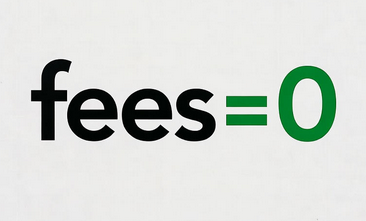Planing of the Finite Aspect Ratio Plate at Subsonic, Transonic and Supersonic Speeds
DOI:
https://doi.org/10.3849/aimt.01800Keywords:
planing, supercavitating projectiles, supersonic speedsAbstract
The mechanics of underwater supercavitating projectiles are currently being extensively
researched. The disadvantage of such projectiles is their movement instability. There is
a proposal to use stern planing plates to stabilize projectile’s movement. However, the
hydrodynamic characteristics of planing plates are known only for low subsonic speeds.
This article describes a load study on a planing plate at subsonic, transonic and supersonic speeds with detached and attached shock waves. The obtained calculation results of normal forces satisfactorily agree with the known theoretical solutions and experimental data and can be used to calculate the motion stabilization of supercavitating underwater projectiles with planing stern plates.
References
SAVCHENKO, Yu.N. Experimental Investigation of Supercavitating Motion of Bodies. In: Supercavitating Flows. Belgium: Defence Technical Information Centre, 2001, pp. 1-24.
VLASENKO, Yu.D. Experimental Investigations of Supercavitation Flow Regimes at Subsonic and Transonic Speeds. In: Proceedings of 5th International Symposium on Cavitation. Osaka, 2003.
KIRSCHNER, I.N. Results of Selected Experiments Involving Supercavitating Flows. In: Supercavitating Flows. Brussels: NATO, 2001.
SEREBRYAKOV, V.V., I.N. KIRSCHNER and G.H. SCHNERR. High Speed Motion in Water with Supercavitation for Sub-, Trans-, Supersonic Mach Numbers. In: Proceedings of 7th International Symposium on Cavitation. Michigan: University of Michigan, 2009.
ZHANG, Z., Q. MENG, Z. DING and J. GU. Effect of Compressibility on Supercavitating Flow around Slender Conical Body Moving at Subsonic and Supersonic Speed. Ocean Engineering, 2015, 109, pp. 489-494. DOI 10.1016/ j.oceaneng.2015.09.027.
WANG, C., G. WANG, M. ZHANG, B. HUANG and D. GAO. Numerical Simulation of Ultra-High Speed Supercavitating Flows Considering the Effects of the Water Compressibility. Ocean Engineering, 2017, 142, pp. 532-540. DOI 10.1016/J.oceaneng.2017.07.041.
DU, Y., C. WANG and Y. ZHOU. A Study on Supercavitation in Axisymmetric Subsonic Liquid Flow past a Slender Conical Body. European Journal of Mechanics – B/Fluids, 2018, 72, pp. 264-274. DOI 10.1016/j.euromechflu. 2018.06.004.
LI, D., B. HUANG, M. ZHANG, G. WANG and T. LIANG. Numerical and Theoretical Investigation of the High-Speed Compressible Supercavitating Flows.
Ocean Engineering, 156, pp. 446-455. DOI 10.1016/ j.oceaneng.2018.03.032.
CHEN, C., T. SUN, Y. WEI and C. WANG. Computational Analysis of Com-pressibility Effects on Cavity Dynamics in High-Speed Water-Entry. Interna-tional Journal of Naval Architecture and Ocean Engineering, 2019, 11(1), pp. 495-509. DOI 10.1016/J.IJNAOE.2018.09.004.
JIANG, Y., Y. LI, J. GUO, L. YANG and H. WANG. Numerical Simulations of Series and Parallel Water Entry of Supersonic Projectiles in Compressible Flow. Ocean Engineering, 2021, 235, 109155. DOI 10.1016/ J.OCEANENG.2021.109155.
CHEN, T., W. HUANG, W. ZHANG, Y. QI and Z. GUO. Experimental Inves-tigation on Trajectory Stability of High-Speed Water Entry Projectiles. Ocean Engineering, 2019, 175, pp. 16-24. DOI 10.1016/ J.OCEANENG.2019.02.021.
YU, K., W. ZOU, R. ARNDT and Z. GUANG. Supercavity Motion with Inertial Force in the Vertical Plane. Journal of Hydrodynamics, 2012, 24(5), pp. 752-759. DOI 10.1016/S1001-6058 (11)60300-4.
WANG, Z., YU, K., ARNDT, R.E.A. and GUANG, Z. Modelling and Simula-tion of Supercavity with Inertial Force in the Horizontal Curvilinear Motion. China Ocean Engineering, 2014, 28, pp. 31-42. DOI 10.1007/S13344-014-0002-Y.
WANG, Z. and H. LIU. Modelling and Simulations of the Supercavitating Ve-hicle with Its Tail-Slaps. Journal of Fluids Engineering, 2015, 137(4), 041302. DOI 10.1115/1.4029330.
ZHAO, X., M. XIANG, W. ZHANG, B. LIU and S. LI. Numerical Study on the Stability and Closure Position of Ventilated Cavity with a Supersonic Tail Jet. Chinese Journal of Theoretical and Applied Mechanics, 2021, 53(12), pp. 3298-3309. DOI 10.6052/0459-1879-21-346.
WANG, Z., K YU and R.E ARNDT. A. Modelling and Simulations of Super-cavitating Vehicle with Planing Force in the Longitudinal Plane. Applied Math-ematical Modelling, 2015, 39(19), pp. 6008-6020. DOI 10.1016/J.APM.2015.01. 040.
COLE, R.H. Underwater Explosions. New York: Dover Publications, 1965. ISBN 0-486-61384-4.
WAGNER, H. About Processes of Impact and Planing on the Fluid Surface (in Germany). Zeitschrift für Angewandte Mathematik und Mechanik, 1932, 12(4), pp. 193-213.
HILTON, W.F. High-Speed Aerodynamics. London: Longmans, 1951. ISBN 1-124-04572-4.
TETSUO, N. and F. KHAN. Compressibility Effects on Cavitation in High Speed Liquid Flow. II Transonic and Supersonic Liquid Flows. Bulletin of the Japan Society of Mechanical Engineers, 1981, 24, pp. 655-661. DOI 10.1299/JSME1958.24.655.
KUSUKAWA, K-I. On the Two-dimensional Compressible Flow over a Thin Symmetric Obstacle with Sharp Shoulders Placed in an Unbounded Fluid and in a Choked Wind Tunnel. Journal of the Physical Society of Japan, 1957, 12, pp. 1031-1041. DOI 10.1143/JPSJ.12.1031.
SEDOV, L.I. Two‐dimensional Problems in Hydrodynamics and Aerodynamics. New York: Wiley, 1965. ISBN 0-470-77110-0.
CHERNY, G.G. Gas Dynamics (in Russian). Moscow: Nauka, 1988. ISBN 978-5-02-013814-8.
GRIB, A.A., O.S. RYSHOV and S.A. HRISTIANOVICH. The Theory of Short Waves (in Russian). Journal of Applied Mechanics and Technical Physics, 1961, pp. 63-75. ISSN: 0869-5032.
Supersonic Gas Jets (in Russian). Novosibirsk: Nauka, 1983.
VINCENTI, W.G. and C.B. WAGONER. Transonic Flow past a Wedge Profile with Detached Bow Wave: General Analytical Method and Final Calculated Results. [Technical Note]. Washington: NACA, 1951.
GUDERLEY, K.G. The Theory of Near-Sonic Flows (in German). Berlin: Springer, 1957. ISBN 3-540-02152-3.
NEILAND, V.J. To the Asymptotic Theory of Addition of a Supersonic Flow (in Russian). In: Proceedings of the Russian Central Aerohydrodynamic Insti-tute. Moscow: TsAGI, 1975, pp. 3-16.
YOSHIHARA, H. On the Flow over a Wedge in the Upper Transonic Region. In: Proceedings of the Second US National Congress of Applied Mechanics. Michigan: University of Michigan, 1954.
GUDERLEY, K. The Flow over a Flat Plate with a Small Angle Attack at Mach Number 1. Journal of the Aeronautical Science, 1954, 21(4), pp. 261-270. DOI 10.2514/8.2990.
Downloads
Published
License
Copyright (c) 2023 Advances in Military Technology

This work is licensed under a Creative Commons Attribution-NonCommercial 4.0 International License.
Authors who publish with this journal agree to the following terms:
1. Authors retain copyright and grant the journal right of first publication with the work simultaneously licensed under a Creative Commons Attribution License that allows others to share the work with an acknowledgement of the work's authorship and initial publication in this journal.
2. Authors are able to enter into separate, additional contractual arrangements for the non-exclusive distribution of the journal's published version of the work (e.g., post it to an institutional repository or publish it in a book), with an acknowledgement of its initial publication in this journal.
3. Authors are permitted and encouraged to post their work online (e.g., in institutional repositories or on their website) prior to and during the submission process, as it can lead to productive exchanges, as well as earlier and greater citation of published work.
Users can use, reuse and build upon the material published in the journal for any purpose, even commercially.






